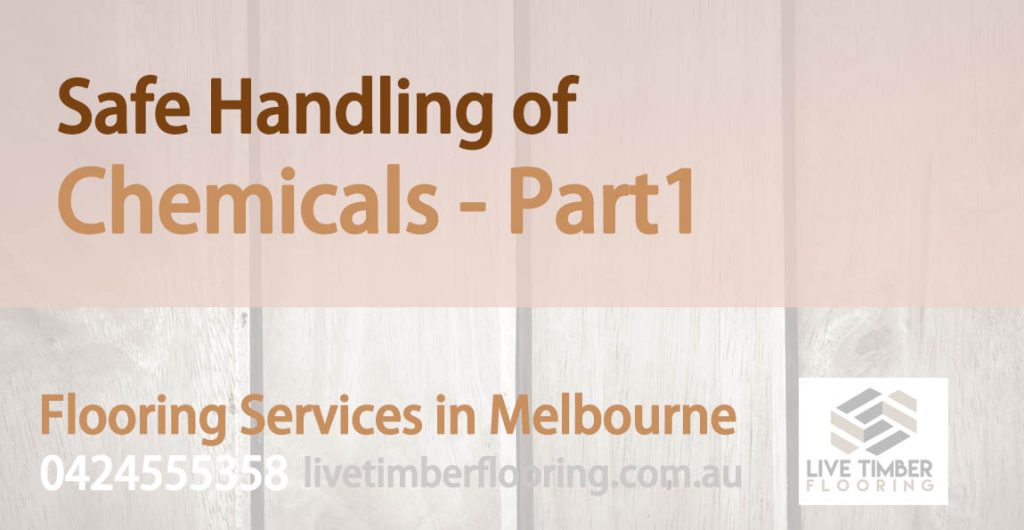
There is nothing better than installing a new hardwood floor or sanding or refinishing to restore the beauty of and old timber floor and increase the value of your home. However, flooring and sanding jobs may expose homeowners, workers, building occupants, and even neighbours to a variety of safety and health risks. In most cases the problem associated with products used to install and finish the wood such as adhesives and sealants rather than the floor itself. Some potentially dangerous refinishing products are adhesives, sealers and varnishes, respirable wood dust, and organic solvents. If not handled properly, some of these products can harm the central nervous, reproductive system, or cause cancer. Moreover, some products contain substances that can trigger allergies or asthma. Fortunately, the safety risk of chemical used in flooring can be reduced by strictly following safety instructions and replacing potentially hazardous products with safer alternatives.
Handling Fire or Explosion Hazard
It was in September 2015 that a headline appeared in the newspaper: “Floor refinishing chemicals spark south Allentown fire”. A single-story ranch home at south Allentown, Pennsylvania was caught on fire. According to the fire department, chemicals used for refinishing the kitchen floor were responsible for starting the blaze. Thankfully nobody was hurt in this firestorm because the home was vacant. Others have not been so lucky. For instance, two young men were burned to death in September 2004 while refinishing a wood floor. Two of their co-workers were badly injured. In 2005, Tinh Huynh, 43, passed away from a similar accident. Unfortunately, tragedies originated from flammable solvents used in hardwood jobs are not rare. So the risk should not be underestimated and should be handled properly. One of the easiest ways to limit the threat of finishing fire is choosing a low combustible product. Here we explain some type of hardwood finishes, from most dangerous to safest.
Lacquer Sealers
Most of the solvent-based sealers used in hardwood finishing especially lacquer sealers contain the high flammable chemical. A liquid is considered flammable when its flash point is under 100o F. Surprisingly the flash point of some hardwood finishing products are well below the normal room temperature. As it happens, the flash point of some certain type of lacquer sealer is as low as 9o F, reported as the source of fire in several burnings including Somerville fatal blaze. Since these type of surface finishes are inexpensive and dry quickly some contractors apply them as the first coat under the final finish. The best solution to handle the safety issues attributed to lacquer sealers is replacing them with safer alternatives such as oil or water-based finishes. There are some safety measurements that should be taken into account while working with flammable liquids. The first and most important recommendation is to prevent known spark sources even though the tiny ones. To preclude the fire you should extinguish any pilot light, disconnect all electric appliances including stoves and refrigerators, cover electric outlets and use only non-sparking tools. It is needless to say that you should never smoke during sanding and finishing job where the flammable vapour are spread all around the room. It is also recommended to provide sufficient ventilation to the room by either keeping the windows open or using safe and spark-free HVAC tools. To tell the truth, it is almost impossible to prevent all sparks. For example, ventilation devices or turning on a light switch can produce sparks. Simply pouring a flammable liquid from container another container may create enough friction to cause a spark. Even static electricity resulted from striking a metal object, such as a nail or staple in the floor, is enough to start a fire. For example, a fire in California was ignited when a hardwood professional hit a brass plate while scrubbing the floor with steel wood. Some other fire catastrophes such as the Hull fire in which Tinh was killed or fatal Somerville fire just got sparked by pilot light. Believe it or not, vapours can travel to other rooms and if they reach enough concentration get ignited there. As an example, a man was badly burned when working in his basement when solvent vapours travelled from another part of his house. Thus, it seems that the best way of avoiding fires originated from refinishing products is using less or non-flammable hardwood finishing products.
References: napervillehardwood woodwrights hunker Protecting Workers and Homeowners from Wood Floor-Finishing Hazards in Massachusetts labour.gov.on.ca homeguides Wikipedia

